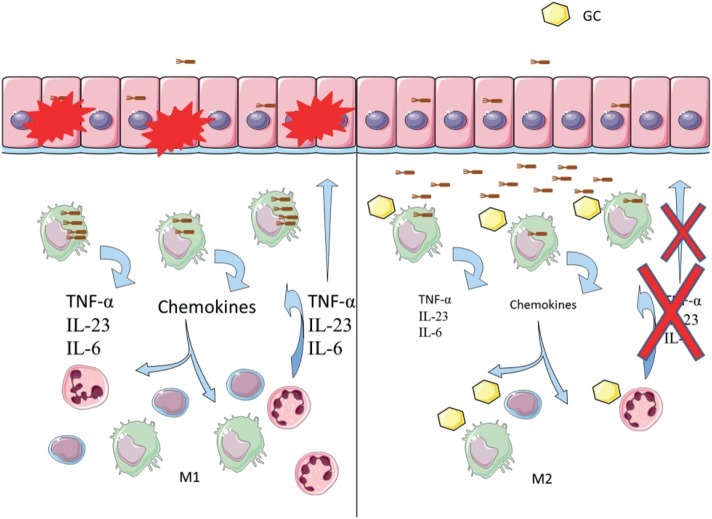Figure 9.
Glucocorticoids induce inhibition of phagocytosis in Crohn’s disease (CD). Left: the proposed model of disease indicates that bacteria such as adherent-invasive Escherichia coli (AIEC) may trigger or maintain inflammation in the gut mucosa. AIEC can infect and cross the epithelial barrier, being afterward phagocytosed by residing macrophages. Increased survival of AIEC inside macrophages induces secretion of chemokines and cytokines. Immune cells are recruited, increasing the inflammatory response and epithelium damage. Right: proposed model of glucocorticoid inducing chronicity in CD. Glucocorticoid treatment may decrease phagocytosis of AIEC by macrophages, impairing bacterial clearance. Decreased inflammatory response affects cell recruitment, which may then die through glucocorticoid-induced apoptosis. A low-grade inflammatory environment protects from epithelium damage but increases AIEC’s chances of survival, which likely perpetuates the disease.

